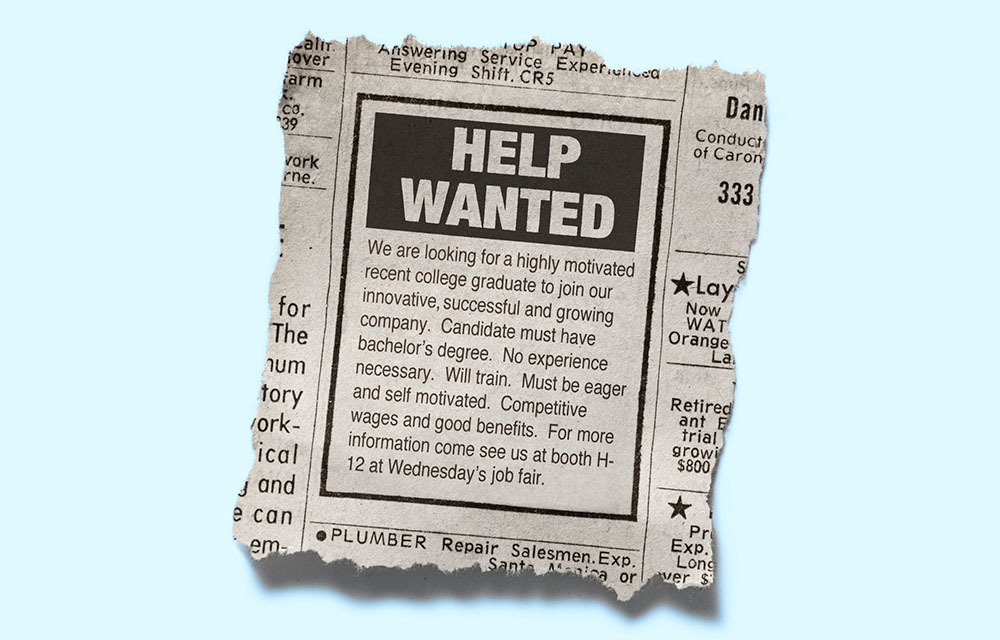Topics include STEM education for the rural workforce, insights form the 2025 CDFI Survey, assessing business conditions for manufacturers, and more.
Business Surveys

We conduct regional and national surveys to provide perspectives on current business activity and expected changes in economic conditions. Find content related to the Manufacturing and Non-Manufacturing Surveys, the CFO Survey, the Small Business Credit Survey and other Richmond Fed business surveys.
 Updating Results
Updating Results
Over a long time horizon, surveys become powerful tools of economic analysis.
A price measure derived from Richmond Fed survey data appears to be a productive way to improve any prediction of inflation.
How does Fifth District manufacturing activity vary by size? The Richmond Fed Manufacturing Survey found that large firms are more optimistic, including about the impact of recent tariffs, compared to small and mid-sized firms.
Jason Kosakow
Survey Director
With a government shutdown and significant delays in getting timely official data, what is the difference between the Richmond Fed price index and the PCE price index?
The economic data that monetary policymakers rely on is often noisy and imperfect. Collecting additional signals about economic outcomes can help.
Anna Kovner
Executive Vice President and Director of Research
Trying to identify single causes of individual business cycles is fraught with misattribution problems.
Liyu Dou, Paul Ho and Thomas A. Lubik
Firms' economic outlooks and tariff concerns improved somewhat in the recent CFO Survey, but higher costs and price growth are still expected by firms who import from abroad.
Though tariff uncertainty persists, most Fifth District businesses that are directly affected by tariffs have raised prices, and many plan to raise prices in the coming months.
Results from the CFO Survey suggest that while trade policy may affect business conditions broadly, firms directly affected by tariffs are impacted most.
Survey data indicates that many Fifth District firms expect to keep employment levels relatively stable, with uncertainty around economic conditions and consumer behavior remaining an important consideration.
According to our May business surveys, most firms are responding to tariffs in a variety of ways, including planning and implementing price increases, delaying capital expenditures, and changing hiring plans.
Survey data suggests firms are monitoring inflation and expect it to rise in the next year, many citing trade policy as a driving force behind the increase.
Zach Edwards and Daniel Weitz discuss the concerns that chief financial officers across the country reported about their own companies and the national economy in the latest CFO Survey. Edwards is a research analyst on the Regional and Community Analysis team at the Federal Reserve Bank of Richmond and Weitz is survey director at the Federal Reserve Bank of Atlanta.
Rural businesses were more likely to expect significant impacts from tariffs than their urban counterparts but were less likely to report those impacts would be negative.
Jason Kosakow
Survey Director
Our first CFO Survey of 2025 explored the extent to which firms' supplies are imported from countries facing tariffs and how this exposure impacts firms' expectations.
Zach Edwards, Lauren Taylor and Daniel Weitz
In March, we asked Fifth District businesses about the impacts of tariffs. Most expected to be impacted negatively and anticipated passing through some of the additional costs to customers.
Marina Azzimonti, Zach Edwards, Sonya Ravindranath Waddell and Acacia Wyckoff
In February, we asked firms how they would react to unanticipated cost increases. Most reported that they would increase customer prices, but passing costs to customers is equally or more difficult than last year.
Renee Haltom and Sonya Waddell share what recent surveys and conversations with Fifth District contacts reveal about the expectations of businesses for their own prospects and the economy as a whole, as well as firms' concerns about inflation, labor markets, and other potential challenges in 2025. Haltom is a regional executive and vice president and Waddell is a vice president at the Federal Reserve Bank of Richmond.
Fifth District businesses are concerned about tariffs, especially those that source inputs or sell outputs abroad. However, data from our December business surveys suggests little relationship between tariff concerns and firms' 2025 price and cost growth expectations.
Relying on only diffusion indexes without confidence intervals or polarization indexes may provide an incomplete picture.
The Richmond Fed asked Fifth District firms to gauge both their business expectations and prospects for the U.S. economy in 2025 and found that firms were significantly more optimistic than previous years.
Jason Kosakow
Survey Director
The Richmond Fed's November business survey special questions revealed firms' expectations for hiring, wage adjustments, and other employment-related topics. Firms also shared if they have or plan to reduce the size of their workforce in the coming months.
Bethany Greene and Jason Kosakow review the damage wrought on communities in western North Carolina and other parts of the Fifth District from Hurricane Helene last September. They also share what their business contacts have told them about Helene's economic impacts, both within and outside of the hurricane's path. Greene is a regional economist at the Charlotte branch of the Richmond Fed and Kosakow is the Bank's survey director.
In the most recent CFO Survey, we explored how the economic outlook of financial executives changed following the 2024 U.S. presidential and congressional elections.
Results from our November business surveys suggest that disruptions (e.g., reduced operating hours, supply chain disruptions) to economic activity from Hurricane Helene were largely, but not only, concentrated in FEMA-designated impact areas.
For our 150th episode, Anna Kovner reviews her career path to becoming the research director at the Federal Reserve Bank of Richmond and reflects on the work of the Bank's Research department. Kovner also offers her views on various topics — including the banking turmoil of 2023, the Fed's "lender of last resort" role, current risks to the financial system, and the "neutral rate" of interest — as well as the current state of the national economy.
Erika Bell and Emily Corcoran discuss the capital needs of small business owners and recent insights yielded by the Federal Reserve's annual Small Business Credit Survey. Bell is community development regional manager for North Carolina and South Carolina and Corcoran is senior manager of regional and community analysis, both at the Richmond Fed.
This post explores how firms whose investment plans were negatively impacted by election-related uncertainty differ from non-impacted firms in optimism levels, growth expectations, and investment motivations.
Pierre-Daniel Sarte and Sonya Waddell share survey results on businesses' use of AI tools and other forms of automation, and research on the potential effects of automation on the nation's overall productivity growth. Sarte is a senior advisor and Waddell is a vice president at the Federal Reserve Bank of Richmond.
Customer spending in the Fifth District has been on a decline according to results from the Richmond Fed's business surveys. This pullback was especially true among lower-income individuals.
Rural areas were hit hard with labor shortages during COVID-19, more so than their urban counterparts. However, the tides have turned with rural wage growth now exceeding that of urban areas.
As the capabilities of generative AI continue to improve, the CFO Survey can provide us insights on the impact these tools are having on firms and the growth of their productivity.
Sonya Ravindranath Waddell
Vice President
Andy Bauer and Renee Haltom talk about why consumers and businesses are telling a different story about the economy than the data suggests. They also discuss how economists reconcile such differences between sentiment and data. Bauer and Haltom are regional executives at the Richmond Fed.
Firms continue to innovate and automate, although responses from Fifth District business respondents illustrate that we are in the early days of AI adoption.
The most recent CFO Survey indicates that most firms expect pricing pressures to persist during 2024, and firms implementing automation are expecting slower price growth than those who are not.
Results from the Richmond Fed's May monthly business surveys indicate that for now, firms report employment gains that are driven by increased hiring more than declining separations.
Sonya Ravindranath Waddell
Vice President
Jason Kosakow and Adam Scavette review the economic effects of the collapse of the Francis Scott Key Bridge in Baltimore on the national, regional, and local level. Kosakow is the Richmond Fed's survey director and Scavette is a regional economist at the Bank's branch office in Baltimore.
Fifth District firms expect a limited impact to their businesses due to the collapse of the Francis Scott Key Bridge, although the impact varies across industries.
We reexamine the Dallas Fed's analysis to understand if regional manufacturing data published by several Reserve Banks still track leading national economic indicators.
In this report, we investigate how the firms that adopted automation differ — in performance and expectations — from those that did not adopt automation.
Our March business surveys included special questions on return-to-office policies and on-site expectations four years after the pandemic motivated a rapid conversion to remote work for a portion of jobs.
Emily Wavering Corcoran
Senior Manager
The Richmond Fed business survey results suggest that wage growth is slowing, and firms expect a return to pre-COVID-19 levels over the next year.
Price growth in the Fifth District is slowing, but firms expect annualized growth and price adjustments to be above pre-COVID-19 norms, suggesting that pricing uncertainty persists.
Even though expectations are not paramount in how most firms set their prices, there is evidence that inflation expectations matter.
Firms remain largely optimistic about their prospects for 2024, and their outlook for the U.S. economy overall improved in the last year. Despite this overall optimism about their prospects, there are still quite a few firms that anticipate growth in 2024 to be below normal, pre-pandemic growth.
Jason Kosakow
Survey Director
This quarter's Research & Commentary digs into an important question facing policymakers: whether the constellation of economic indicators have returned close enough to "normal" levels to merit a reconsideration of the monetary policy stance.
Firms are planning to maintain or increase their workforce in 2024, despite persistent hiring challenges and a recent downturn in short-run expectations. But how would this change if demand decreased unexpectedly?
After a few months of positive readings, results from our business surveys turned downward in October. Still, firms are holding steady on hiring plans, at least for now.
Nicholas Haltom
Senior Manager
We regularly report the quantitative results from the Richmond Fed business surveys, but participants' comments also provide useful context for changes in local business conditions.
Jason Kosakow, Nicholas Haltom and Sonya Ravindranath Waddell
In the most recent CFO survey, financial decision-makers shared whether interest rate hikes have caused them to pull back on their spending plans, and for those not yet affected, whether further hikes would impact their firm. Compared to the fourth quarter of last year, a higher percentage of firms reported that interest rates have curtailed capital and non-capital spending plans.
After two years of tightness, many labor market measures have made notable progress toward reaching more normal levels. But we might still have some time before we see the same for wage growth.
Nicholas Haltom and Sonya Ravindranath Waddell
The current outlook of small firms is noticeably worse than for large firms. On average, small firms report being more affected by tight financing conditions, are less optimistic about the economy and their own prospects, and expect lower revenue growth in 2023.
The labor market has surprised economists and forecasters with its resilience. Data from our business surveys indicate that the Fifth District labor market may be cooling.
The Richmond Fed business surveys, like other surveys, find that firms are facing tightened credit conditions. However, most surveyed firms, regardless of size, have not needed to seek new credit.
Sonya Ravindranath Waddell
Vice President
Since the second half of 2022, we have observed firms increasingly pulling back on capital expenditures. This post explores the recent declines in capital investment using data from The CFO Survey and the Richmond Fed monthly business surveys.
Jason Kosakow and Sonya Waddell discuss the expectations of regional and national business leaders about the economy, based on responses to the CFO Survey and the Federal Reserve Bank of Richmond's regional business surveys during the first quarter of 2023.
In the first quarter 2023 CFO Survey, an increasing share of firms cited 'unfavorable financing' and a 'lack of funding' as reasons for not engaging in capital investment. This evidence suggests that firms are beginning to feel the effects of higher interest rates as monetary policy continues to tighten.
Fifth District firms have experienced faster price growth since 2021. Increased uncertainty coincided with firms adjusting their own prices more frequently than before the COVID-19 pandemic.
February's monthly business surveys show that businesses, for the most part, are optimistic about their firms' prospects but less optimistic about the U.S. economy.
Jason Kosakow
Survey Director
Results from the fourth quarter 2022 CFO Survey indicate that although monetary policy has grown as a key concern for respondents, most note that current interest rate levels have not affected their capital or non-capital spending plans. We also find evidence that if employers were looking to raise wages to account for inflation in 2022, the catch-up was only partial.
Jason Kosakow and Santiago Pinto describe how survey data is gathered and used to assess regional and national economic conditions. Kosakow is survey director and Pinto is a senior economist and policy advisor at the Federal Reserve Bank of Richmond.
While more than a third of businesses expect to expand their workforce in the coming year, some firms have started to reduce headcount by not replacing outgoing workers. Most businesses would take that approach, or keep employment steady, if demand softened in the near future.
Joseph Mengedoth
Regional Economist
Our Fifth District business surveys indicate that firms are paying more attention to inflation as they make price- and wage-setting decisions. But businesses also expect own-price growth and inflation to moderate in the near future.
Nicholas Haltom and Sonya Ravindranath Waddell
Over the past year, firms have had difficulty finding workers. Recent evidence from Fifth District business surveys indicates the difficulty is shifting from lower- to higher-skilled hires.
Nicholas Haltom and Jacob Walker
In the third quarter 2022 CFO Survey, more firms reported elevated cost increases and the ability to pass a larger chunk of those cost increases on via price increases.
Supply chain disruptions and fluctuating input costs are improving for some Fifth District firms, but the threat of a recession looms large according to August's surveys of businesses.
Fifth District firms recently reported being able to better meet customer demand. A cooling economy may be part of the story.
Jason Kosakow
Survey Director
The second quarter results from The CFO Survey reveal growing concerns about the outlook for the U.S. economy. Firms continue to struggle amid the high inflation environment and against a backdrop of further removal of monetary accommodation.
Diffusion indexes can help summarize survey responses, but they have some limitations.
Small businesses remained challenged throughout 2021 and those that sought financing to bridge funding gaps experienced a higher rate of denials than before the pandemic.
Surekha Carpenter and Molly O'Quinn
In our March business survey, we found that firms continue to struggle finding workers across skill levels, particularly in the low- to mid-skill range.
The first quarter CFO Survey revealed firms' dampened optimism about the U.S. economy and lower projections for real GDP growth and equity market performance. At the same time, firms are hampered by hiring difficulties that are restraining revenue growth.
Many firms don't follow inflation closely for setting prices, but the recent high inflation may have some firms taking a closer look.
Fifth District firms report that two years into the pandemic, they still cannot provide enough goods and services to completely meet customer demand.
Remote work options seem to go hand in hand with greater geographic reach in recruitment efforts for some firms.
Steven J Davis, Claudia Macaluso and Sonya Ravindranath Waddell
Fifth District firms increase employment and raise wages in response to a changing economy.
Jason Kosakow
Survey Director
Third and fourth quarter results from The CFO Survey point to widening constraints on labor supply and intensifying supply chain disruptions that are showing up as rising costs that could feed through to higher prices.
In a tight labor market, Fifth District firms struggle to attract qualified workers.
Jason Kosakow
Survey Director
Amid labor shortages and supply side disruptions, firms are struggling to fully meet demand and many reported they expect this issue to persist.
Roisin McCord
The labor force was pushed into a massive remote work experiment in 2020. What are employers in the Fifth District planning, and what challenges do they anticipate?
Sonya Ravindranath Waddell
Vice President
Manufacturers have recently seen an increase in orders, but disruptions in the supply chain have made meeting demand a challenge.
Roisin McCord and Alexander Nikolov
Recent Richmond Fed surveys shed light on how employers attempt to fill jobs.
Steven J Davis, Claudia Macaluso and Sonya Ravindranath Waddell
Surveyed Fifth District firms are raising wages at an above normal pace as they struggle to fill open positions.
Roisin McCord
Results from the second quarter CFO Survey indicate that, on average, firms expect larger than normal cost increases to persist until spring 2022. What does that mean for consumer prices?
Regional businesses are returning to pre-COVID-19 operations as workers return to the office and business travel picks up.
Jason Kosakow
Survey Director
The economic recovery enabled by the vaccine rollout has increased demand for Fifth District goods and services. But can supply keep up with demand?
Jacob Crouse and Sonya Ravindranath Waddell
First quarter survey results suggest that non-residential investment is likely to continue to be sluggish, at least over the next six months.
Surveyed firms shared how the balance of remote versus in-office work has shifted in the past year and what changes they anticipate in the future.
Roisin McCord
Firms report how the coronavirus is influencing their employment levels, hiring plans, and wages in our annual survey.
Firms anticipate it will take some time to dig out from the shocking decline of the spring.
Businesses report on their progress since the start of the pandemic in our July and August surveys.
Roisin McCord
July data from the Household Pulse Survey reveals some of the reasons people have not been working and how households met their spending needs.
Jacob Crouse
The second quarter CFO survey results paint a nuanced picture of how firms view changes in revenue and employment over the next 18 months.
While most businesses surveyed have suffered some negative effects and loss of revenue as result of COVID-19, most remained open and operating, at least partially.
Roisin McCord and Joseph Mengedoth
After almost 25 years of running the Duke/CFO Global Business Outlook survey, Duke’s Fuqua School of Business is joining forces with the Federal Reserve Banks of Richmond and Atlanta to launch The CFO Survey.
The Richmond Fed conducts monthly surveys of business conditions. The information collected are aggregated and combined into several individual diffusion indices. But what kind of information do diffusion indices reveal?
According to a survey conducted in November 2018, many Fifth District businesses plan on increasing employment in the next year and are generally offering higher starting wages for at least some job types.
Joseph Mengedoth
Regional Economist
Beginning with the release of our February 2018 survey results, we began to report a few new variables in our Fifth District Survey of Manufacturing Activity and Fifth District Survey of Service Sector Activity. What are they and what can they tell us?
Roisin McCord
A November 2017 survey of Fifth District businesses found that most firms plan on increasing hiring in the next year as well as raising wages to attract and retain workers, though not for all positions.
Michael Stanley
The effects of Hurricanes Harvey and Irma on Fifth District firms were largely indirect and negative, although some businesses reported positive economic impacts.
Jeannette Plamp
Earlier this year, we reported the results of a special survey on hiring and wages. A similar survey was conducted in November ... the results are in.
Joseph Mengedoth
Regional Economist
The qualitative data conveyed through surveys, or gathered at roundtable meetings with business firms or our own Bank directors are very valuable pieces of information. However, summarizing and extracting meaning out of this information are very challenging tasks. So how can we make sense out of this information?
The Richmond Fed publishes a series of diffusion indices based off of surveys of manufacturing and service sector firms across the Fifth District. These indices help us to understand business conditions in our region in a timely and more comprehensive way.
Sonya Ravindranath Waddell
Vice President
In May, the Richmond Fed added questions to our regular monthly surveys to explore employer opinions on hiring, employee retention, and wage plans.
Aileen Watson
The Richmond Fed conducts monthly surveys of business conditions in the manufacturing and service sectors of the Fifth Federal Reserve District. This article provides background information on these surveys and on other manufacturing and service sector surveys.
David A. Price and Aileen Watson









































































